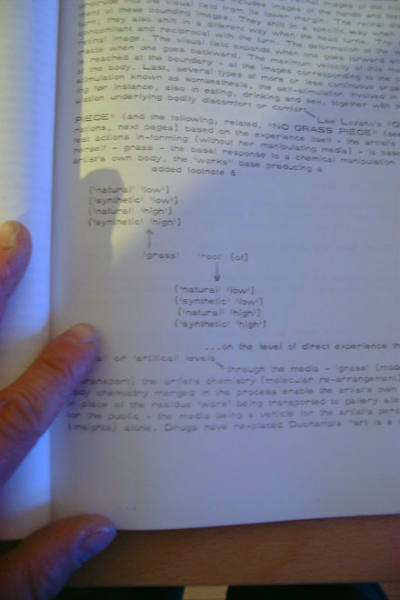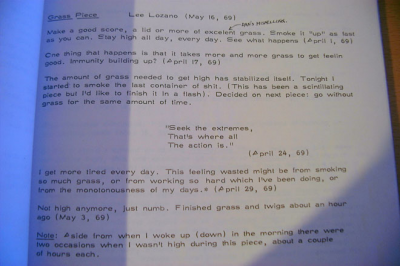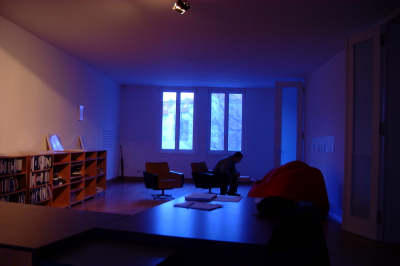
Insert
BuroFriedrich
Berlin
2001
Is the fusion of art and life a radical
concept?
What are the consequences of living out
(artistic) concepts when this might imply
complete invisibility or even erasure? Or, at
the total other end of the line, unerasable
visibility?
Are concepts and ideas more radical when they
remain unexecuted: after all, doesn't the
imagination far exceed reality? Or does it?
How does one carry out or present or represent
concepts and ideas that can only be experienced
when 'lived' through'?Insert
How conceptual is experience? How can public engage itself with radicality?
These questions were running through our minds when, at the beginning of 2001, we were asked by BüroFriedrich in Berlin to prepare a presentation with text pieces by the conceptual artist Lee Lozano, who died in 1999.
The presentation became an 'exhibition as tool': an exhibition grasped as the starting point for research into the similarities and differences between the artistic practices of the 1960's and today. Within the framework of the presentation at BüroFriedrich, interviews with artists, critics and theorists took place. Some of them had been directly involved in the art scene Lee Lorenzo had been a part of.
Others related to the tradition of conceptual art and their practices address similar subjects. Yet another group uses concepts from artistic practice to bring about (political) change.
Many artists from the early days of conceptual art were acutely aware of the art system within
which they wanted to operate. Lee Lozano was no exception. However, she adopted a far more personal approach than many others and allowed herself to be led by her own, personal circumstances. Her experiments with drugs (Grass Piece and No-Grass Piece) or actions
such as the Boycott Women Project and the Dialogue Pieces, which were both condemned as politically incorrect, reflect these other intentions. With her General Strike Piece and finally Drop-Out Piece, Lee Lozano definitively stepped outside the art world. The consequence of this artistic and radical act is that her work has as good as vanished from the annals of art history and her oeuvre has remained anonymous.
While researching this project for BüroFriedrich it became painfully apparent how little of Lozano' s life, work and thought has survived; a couple of lines in the catalogue Global Conceptualism, Lucy Lippard' s Six Years: the Dematerialization of the Art Object, Dan Graham' s Rock My Religion, and a couple of articles in Art in America and Artforum were all we could find on her ten-year art career.







More recently the Dallas Observer (9 December 1999) published an article in response to her death and most recently, like a true revival, Artforum ran a long article which included interviews with a number of her colleagues and critics from the 1960s (October 2001).
Conceptual art has recently begun to attract attention once again through such exhibitions as Global Conceptualism, which have been influenced by the conceptual approaches of contemporary artists. However, because the consequence of canonizing work in this way is its institutionalization - which is exactly what the conceptual artists of the sixties rebelled against, in both their work and attitudes - it is important that this new attention for conceptual art should be deployed to create an opening beyond what has been, while preserving and building on a critical approach to this 'field of research'.